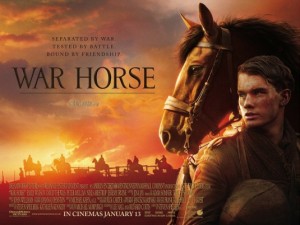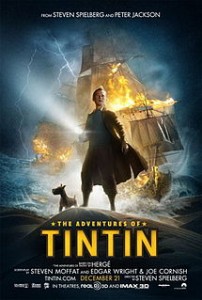Red Tails
Posted on January 19, 2012 at 6:00 pm
The official military documents of the 1940’s said that African-Americans were “mentally inferior” “subservient and cowards” and not fit to fly planes. The Tuskegee Airmen of WWII proved that African-Americans were outstanding pilots. They had to fight to be trained and they had to fight to be allowed to do combat missions, but once they were in the air they demonstrated skill, courage, and dedication that made their divisions one of the most highly decorated of the war. For George Lucas, a long-time scholar of aerial combat, a film about the Tuskegee Airmen was a passion project. When the studios told him that they would not finance an expensive movie with no white leading characters, he put up almost $100 million of his own money for a feature film and a documentary about one of the most inspiring stories of the 20th century.
It has the best of intentions, an excellent cast, and thrilling battle footage. But the scenes on the ground are clunky. It is in part because the filmmakers, with some justice, do not trust the audience to know very much about history, both of the second World War and of institutionalized racism, so they feel they have to explain everything. But screenwriters John Ridley and Aaron McGregor (the “Boondocks” comic strip) make the dialog so expository-heavy it is a surprise the aircraft are not too weighed down by them to get off the ground.
Cuba Gooding, Jr. and Terrence Howard (both, by coincidence, playing Tuskegee Airmen for the second time) play officers inspired by real-life General Benjamin O. Davis. Gooding plays Major Emanuelle Stance, the commanding officer of the Italian air base where the Tuskegee Airmen are waiting to be allowed to fly missions and Howard plays Colonel A. J. Bullard, who is in Washington advocating for his fliers to be given a chance. The dignity and resolve Howard shows in meetings with a racist superior officer (“Breaking Bad’s” Bryan Cranston) shine despite the awkward dialog.
So does the terrific cast of young actors including Nate Parker, Elijah Kelly, Method Man, Ne-Yo, and, as the daredevil every war movie has to have (think of him as a WWII Maverick from “Top Gun”), British actor David Oyelowo. His nickname is “Lightning” and he’s the kind of guy who has to have one more swing around to hit one more target on the way home. There is the usual conflict between the by-the-rules guy and the rules-are-made-t0-be-broken guy and a sweet romance with a local girl who speaks no English. The script falters but the power of the real story, the sincerity and screen presence of the actors and the dedication and gallantry of the Tuskegee Airmen and the men who portray them make this a stirring tribute.




